
About This Quiz
Romance films aren't for everyone, and neither are thrillers or slapstick comedies for that matter! Who doesn't love a good car chase, though? Think about that romance film that seemed to drag on too long with complex dialogue and a bunch of gazing. Wouldn't the movie be much more tolerable with a good car chase?
If you're a real car fanatic, you may even spend the entire movie ignoring the story altogether and expending your energy trying to identify the cars parked along the road or that the main character is driving. There's even a good possibility that you chose the films you devote your time and attention to around having cool cars in them. Did anyone watch "The Fast And The Furious" for the acting? It's highly doubtful.
When you combine a seemingly bland car and some sharp dialogue, then dash in a few dashes of squealing tires, you can create a movie masterpiece. How much of an expert on American cars in films are you? Take a meander through our American cars in movies quiz and see how many movies you can identify. Who knows, you might fail the quiz but have an impressive list of movies on your "to watch" list.

When you think of tire squealing and bridge jumping, it's hard not to think of Burt Reynolds and Sally Field outrunning "Smokey" in this fun comedy. In an attempt to attract a younger generation of viewers in 1994, Brain Bloom (from "As The World Turns" and other television shows), was cast as being a new Bandit, driving a Dodge Stealth in the made-for-television movie, "Bandit." It was a flop, and one could only wonder if the film would have been better received with a Pontiac and some Screaming Chickens.

Several different Challengers were given on loan from the Chrysler Corporation for the production of the film. Among those loaned included three 440ci with six-packs and 426 Hemi. Don't worry about the Challenger meeting its fate in the fiery crash at the end. A 1967 Camaro was used instead. Thanks to trick photography, not many people noticed. The crash car was attached to a cable and drawn at rapid procession into the bulldozer, not actually driven. If you watch the crash scene in slow motion, you can see the car engulfed in flames before it hits the bulldozer. Chrysler demanded the return of the vehicles after filming; therefore, they couldn't destroy any during production. Thus the use of the Camaro.
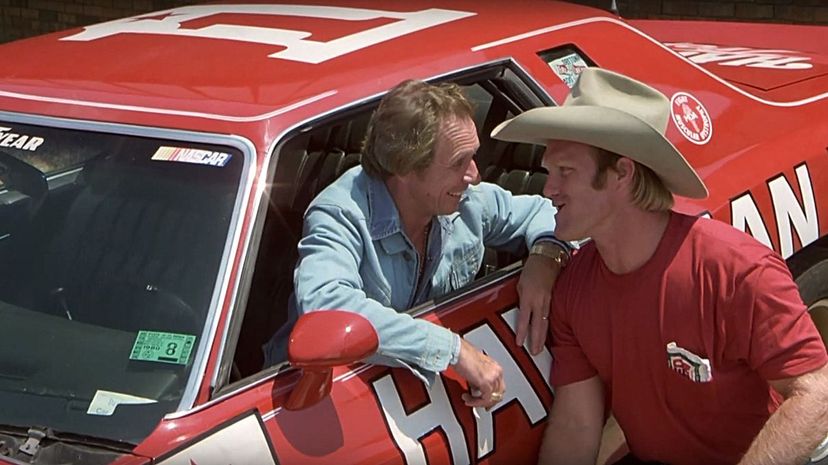
With an estimated budget of $18,000,000, "Cannonball Run" featured some of the most desirable actors and vehicles the early 1980s had to offer. Burt Reynolds cruises through the film in a sweet orange jumpsuit and Farrah Faucett finesses the wheel without ever getting her hair askew. The real star of the film is a Hawaiian Tropic Chevy Chevelle Laguna driven by Mel Tillis and Terry Bradshaw.
Advertisement

Talk about a wrong turn! More interesting than the movie itself is the history of the Delorean and Delorean Motor Company. After securing financial backing for his fledgling company, John Delorean opted to produce his Delorean in Northern Ireland, although the company was American. Not even the wild popularity that "Back To The Future" brought the Delorean was enough to save the company from bankruptcy. Quality issues, lack of demand and impracticality were the final nails in the DMC coffin.
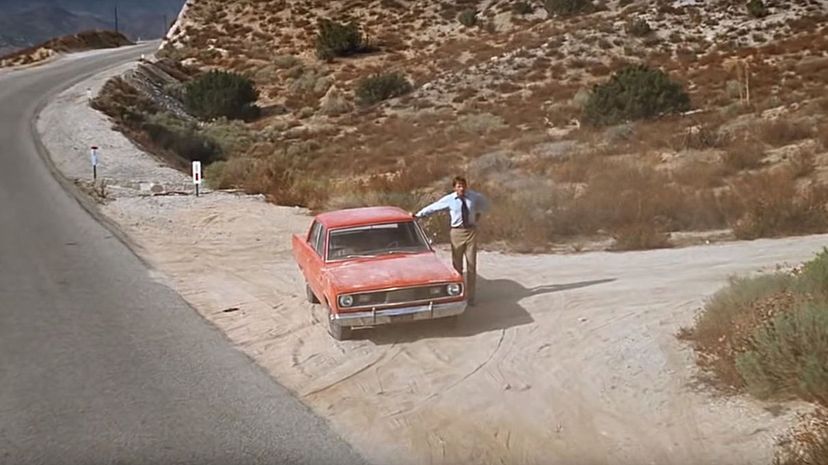
Dennis Weaver reaches a state of absolute desperation and panic in the desert of California in this obscure classic. Instead of being strictly a car chase film, the tension between the offended truck driver and businessman creates a psychological thriller atmosphere as well. Somebody dies in the end, but you won't find a spoiler here.

C. Thomas Howell plays our naive main character, Jim Halsey, cruises without incident from Chicago to West Texas before giving into temptation and picking up a hitchhiker. The 1977 Cadillac Seville used in the filming was modified for the film, including a set of custom wire wheels and a grill that resembled a Rolls Royce. The car was an interesting choice for a film, seeing that it was a 10-year-old Cadillac at the time of filming. Another version of "The Hitcher" was made in 2007, although with a very different plot.
Advertisement

In the original scene, James Bond decided to jump the modest Hornet over a broken bridge and ended up doing an unbelievable barrel roll. Guy Hamilton, the director, saw this scene as being almost too goofy and chose to add a slide-whistle for comic relief. The stunt was done by "Bumps" Williard, who completed it on the first take, yet received no mention in the film credits.

Much like some of the controversial "what color is the dress" posts on social media, the film "Dirty Mary Crazy Larry" has some of the same colorful drama. The 1969 Charger used during filming was a brilliant yellowish-green hue that the Chrysler corporation called Curious Yellow. The only problem is that Curious Yellow wasn't available on the '69 Charger; it was a '71-specific color. This left many purists scratching their heads. It turns out that the production crew painted the '69 Charger in '71-specific color and added the black racing stripe for extra flair. Quite the automotive Easter egg!

This futuristic sequel was filled to the brim with intricate storylines, complex dialogue and terminology that the viewer had to concentrate on for the film to make sense. Perhaps in an attempt to use subliminal messaging and product placement, Cadillac made aggressive measures to assure their cars would be front and center in the film. The Cadillac brand had become stereotyped by being a car for the older crowd, so placing Cadillacs in a science fiction thriller seemed to be a strategic move to appeal to the younger crowd. Even though a Cadillac, including an Escalade and CTS, can be seen for over 15 total minutes of the film, most viewers only remember Neo.
Advertisement

Although the film didn't win any major acting awards, the vehicles featured were second to none. Other notable cars from the film include a monstrous 1970 Dodge Charge R/T and a classy 1963 Ford Galaxy 500. The Stingray in question had 10 replicas made. These can be seen in such outrageous stunts as jumping from a train and driving off a cliff. The average price of these replica cars was around $40,000, but a few were built for much less. These cheaper variations used air-cooled Volkswagen engines instead of crate motors.

The Bluesmobile might have been tough on the eyes, but it was a masterful piece of American automotive craftsmanship. To use the words of Elwood Blues, "It's got a cop motor, a 440-cubic-inch plant. It's got cop tires, cop suspension, cop shocks. It's a model made before catalytic converters, so it'll run good on regular gas." The scene where Bluesmobile is pursued by Illinois State Troopers was filmed at the Dixie Square Shopping Center Harvey, Illinois. The mall still stands in a state of derelict repair.
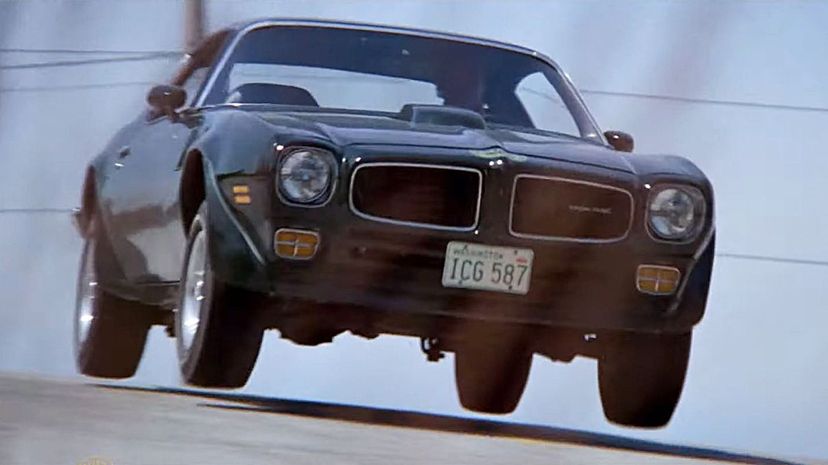
John Wayne trades in his typical panorama of sagebrush and horses in this veteran detective hellbent on revenge film. The film is a treasure of automotive cinema due to the fact it was the first film to employ the use of air cannons for assistance in stunts. In one of the last scenes during the race along the beach, the car in which John Wayne is being pursued gets shot and starts to tumble into the ocean. In reality, the air cannon used for the stunt was overloaded and caused the stunt man serious injuries.
Advertisement

The film doesn't have much of a saving grace as a classic film, but the almost 3-minute car chase scene is worth watching. This scene has many subliminal nods to the movie "Bullit," such as the way Duvall clicks her seatbelt and the attire of other drivers in the chase scene. If you can sit through a semi-comical melodramatic film based loosely around a shut-in trying to fly using his man-made set of wings, then this is for you.

The International Harvester Loadstar started as being a major point of stress and drama in the film but became a hero in the end. With Richard Pryor at the wheel as the bus driver, who "just drove the bus," the group of oddball orphans learned not only about the landscape of America but about themselves as well. The bus also had plenty of adventures, including going off-road to get to a secret fishing spot and getting stuck in some serious mud. The valiant yet ugly bus made it across the country - from Philadelphia to Washington state - with few incidents.

Throughout his film career, Burt Reynolds seemed to be cast in any movie that required a handsome man who knew how to navigate a car around a dissolving radius corner. "White Lightning" was no exception, putting him behind the wheel of a brown Ford Galaxie 500. Automotive purists had a few issues when the movie came out, issues not even the cool, clean acting of Burt Reynolds could cover up.
Advertisement

The vehicles used in this gritty drama are less about how fast they can outrun the law, but more of a philosophical means of escape. Filming of the movie took place in the impoverished West side of New York, and very little set design was needed to create the seedy backdrop required to set the scene of the dark film. DeNiro can be seen driving several different Checker cabs throughout the movie. If you look very closely, you'll see the numbers and serial numbers changes between scenes.
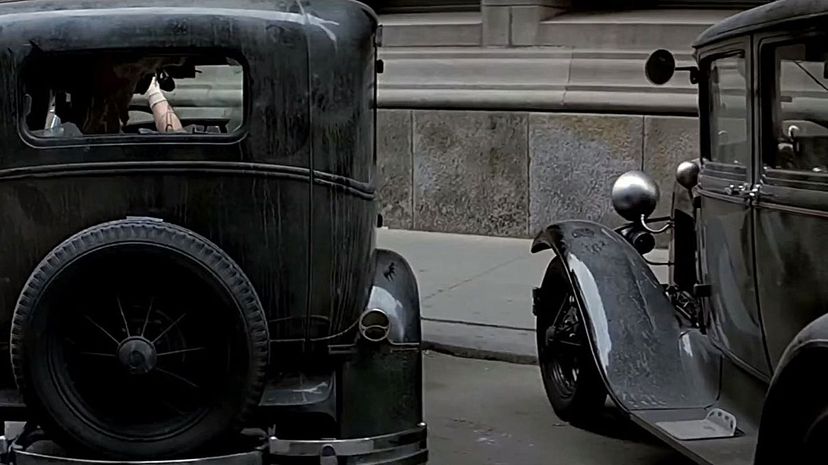
"The Untouchables" combined a stellar cast with beautiful cinematography and some rare automobiles. In one scene, a 1930 Buick Series 40 gets riddled with bullets after crossing a picturesque bridge. Another notable mention is the 1931 Chrysler Eight Sedan cruising lower Wacker Drive in Chicago. Don't grow too fond of any of the classic cars in this movie, though! Most of them become bullet shields with wheels.

Clint Eastwood not only starred but also directed this box office blockbuster, which became the most significant success of his entire movie career. Although the car belongs to Eastwood's character in the movie, the only person who drove the car in the film was his neighbor, Thao. The 1972 Gran Torino differed from previous manifestations, featuring improved styling, including quad headlights and a pronounced hood. There were 92,033 of the same model Gran Torino Sport used in the film made in 1972.
Advertisement

This goofy film showed a soft side of Clint Eastwood that most people didn't know he had. While he cruised around with Clyde, his pet orangutan, he got into many capers. If you have an imagination, try to picture Burt Reynolds as the main character. Reynolds was supposed to receive the script, but through an error of a secretary, Eastwood ended up with it instead. Other cool vehicles featured in this zany movie include a classic Panhead Harley Davidson and one of the first Toyota Corollas introduced to the American market.

The stretch limo used wasn't the only thing crying for attention while filming in South Central Los Angeles was done. All members of the cast were warned explicitly not to wear red, due to recent gang violence between rival L.A. gangs. Metallic pink paint, a black vinyl top and white walls set this '84 Cadillac apart from any other on the road. The big car handles well in the movie, though, and flies around corners with ease, with the chauffer spilling Pinky's drink.

The racing done for the film was real, but instead of going full speed around the track, the cars were governed to a maximum of 120 miles per hour. Potential crew injuries and automotive incidents were reduced by keeping the pace 20 mph slower than top speed. One of the costliest events during filming wasn't to an individual, but a camera. Tom Cruise tried to turn right even after being told not to and ended up losing control of the vehicle. The car went careening into a wall, taking out the expensive camera.
Advertisement

To the casual movie-goer, the most distracting thing about the film is the lack of good acting. To a keen automotive eye, however, the movie was ridden with continuity mistakes. Examples of such include the order of police cars change several times throughout the same chase (although they're driving in a formation), and a 1980 Corvette drives around smoothly, although with visible suspension damage. A fan favorite oops is a Thunderbird that magically heals itself of a broken axle. The movie is perfect for anyone who loves terrible dialogue and shots of vehicles going off cliffs in slow motion.
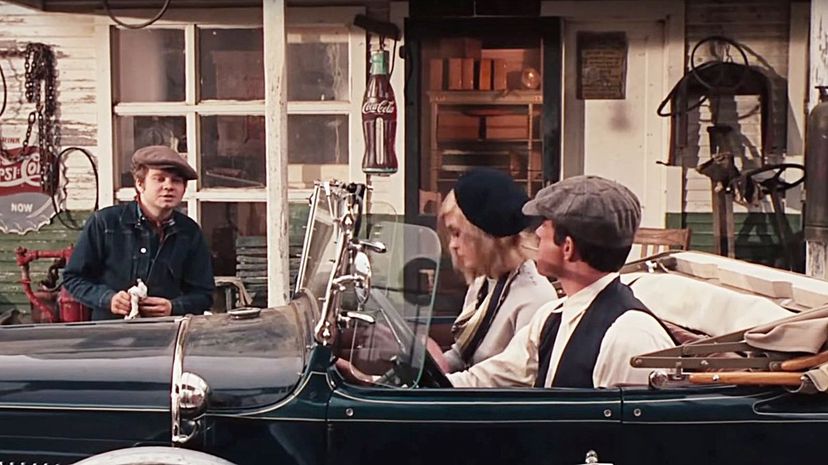
As can be expected of a film about a couple of young criminals on the run, "Bonnie and Clyde" was action-packed and certainly didn't skimp on the car chase scenes. The DeSoto used for filming was featured at the Scottsdale Barret Jackson auction in 2013 and sold for $33,000. Although the car itself had no real ties to the real gang, its likeness appeared on the cover of the DVD release of the film. With the purchase of the car, the new owner also received a period-appropriate bank bag and machine guns from the bank heist.
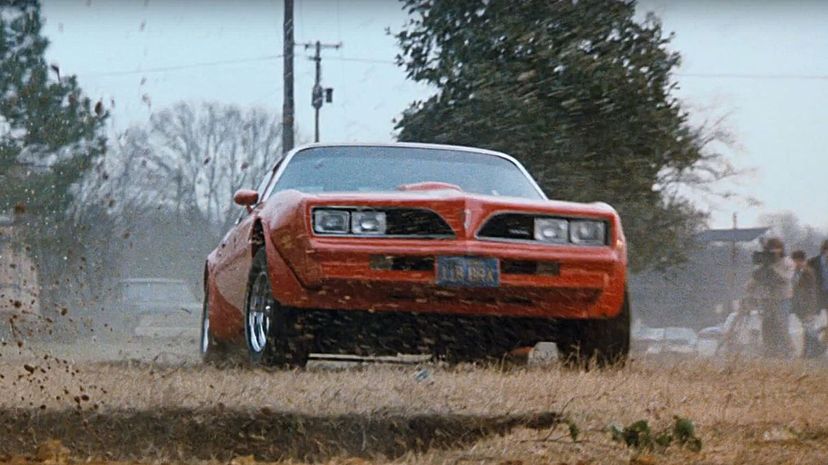
As an aging stunt man, Burt Reynolds is on a mission to re-establish his reputation as the best stuntman in Hollywood. Going with the course of the plot lines, you can imagine how many jumps, explosions and squealing tire scenes are packed into the 90-minute-long movie. Buddy Joe Hooker drove The1978 Trans Am used in the film for all of the major stunts. The movie itself is a nod to Buddy Joe Hooker but changed his name slightly to Hooper. Hooker holds the record for the world's longest rocket car jump and is still active in stunt coordination for films.
Advertisement

It was only natural that George Lucas directed this car-studded film full of teenage antics and youthful hopes for the future. As a young man growing up in Modesto, California, he had aspirations of becoming a race car driver. The film was placed as one of the best American films in history and featured on many "must-see" lists. The sequel, "More American Grafitti," has been named as one of the worst sequels of all time. Some notable American muscle in the film includes a brilliant yellow 1932 Ford V8 driven by the character Milner and a 1956 Ford Thunderbird driven by Suzanne Somers.

The beautiful gold Impala used during the filming belongs to Ice Cube himself. If the car looks gargantuan in the movie, you're right! Measuring over 17 feet in length and over 6.5 feet wide, the Impala was one of the top-selling cars made by Chevy in the early 1960s. That specific model of Impala was one of the first to implement the use of warning light indicators instead of gauges for issues such as oil pressure and temperature. If you were to buy a similar Impala today, you're looking at a price tag of around $70,000, a drastic jump from the sticker price of $2,900 in 1963.
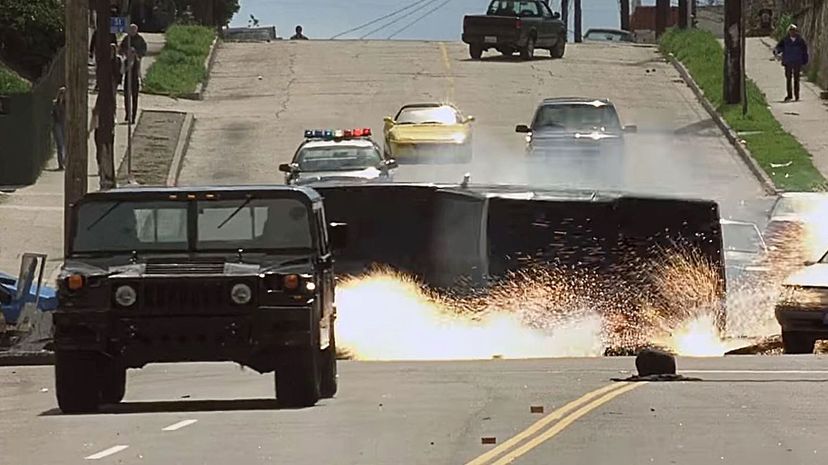
Even a stunning script and award-winning actors couldn't distract viewers from the obviously fake driving scenes in the movie, the police pursuit in particular. The roads the Hummer is being pursued on are straight, however, the steering wheels are turned like they're navigating a gymkhana in an abandoned parking lot. The Hummer used in this film was a real purpose-built SUV for military use. In 1998, after Chevy requisitioned Hummer, they were built on the Tahoe chassis.
Advertisement

The movie was loosely based on the book of the same title written by Hunter S. Thompson. "The Shark," as the author Thompson called it, was a symbol of the American dream. There were two cars used during filming, a stunt car and Thompson's personal vehicle, the same one in which he made his iconic trip to Las Vegas. Also used in the movie was a battered 1970 Ford Maverick that Hunter drove in L.A. while picking up provisions for the journey. A high-tech 1971 Cadillac Fleetwood Eldorado was also used. To use words from the film, "full of bells and whistles, I would never understand."

This film features one of the most believable and engaging car chases of all time. One of the significant contributing factors might be that the car used in the high-speed chase wasn't anything particularly exotic. The forgettable beige-colored 1985 Chevy Impala was a police car in real life. It was rented from the Los Angeles Police Department, along with a few other cruisers from neighboring departments. The actual chase scene was the last sequence to be shot, and they planned it as such so that if a cast member got hurt during filming, it wouldn't slow down the production of the film.

The Chevelle SS used in the film appears to be black, but in the proper lighting, it is green. The metallic forest green makes a dramatic backdrop against the black racing stripes found running down the hood and truck. More than 37,000 forest green cars were made for the 1970 production year, with the El Camino and Monte Carlo sharing the colors. Other cool American vehicles from the film include a 1969 Mustang GT and 1968 Dodge Charger.
Advertisement

The Ford Motor Company was incredibly proud to offer up a couple of Mustangs for the filming of "Bullitt" but not without some equally attractive competition from Dodge. A stunning 1968 Dodge Charger R/T was used to rival the Mustang in the epic chase scene. If you watch closely, however, you'll see that the Charger magically changes from an R/T to a 440 and back. If the two cars were to go head to head on a quarter-mile race, the Charger would be a fraction better, two-tenths of a second to be exact.

It's almost impossible to make out the lines of the Barracuda, but they're under there! Renowned automotive modification company Barris Kustom Inc. took the standard production car and morphed it into a beautiful, definitely one-of-a-kind roadster. A total of 40 coats of hand-rubbed lacquer were worked into the paint, giving it a shine that seemed like it could burn your retinas. Looks aren't everything, though! The car was modified under the hood as well. A laundry list of upgrades allowed the sort of bizarre Mopar to go 160 miles per hour on a quarter-mile drag strip.

The only Cadillac components you can make out from Ecto-1 are the pronounced hood line and dramatic fender fins. Beyond the pronounced hood, the rest of the parts were pieced together by Miller-Meteor conversion company and assembled in Piqua, Ohio. The Miller-Meteor company made around 400 of these conversions. The massive car weighed in at over 3 tons without passengers and measured over 20 feet long. After sitting on display at the Volo Auto Museum in northern Illinois, the car was sent to auction in 2007 with a price tag just shy of $150,000. That figure isn't that bad, seeing as how replicas of the same car that have no actual affiliation with the film have been auctioned for $130,000.
Advertisement

"Rush Hour" featured the odd couple of Tucker and Chan who don't get along in the entire movie. The saving grace to cut the tension between the two was the beautiful Stingray that was chosen as their beat car. The original script called for the car to be red with a white top, but when a couple of beautiful black Corvettes were found, the red cars were scrapped. The car used for filming met the same fate as the Ecto-1 and dozens of other Hollywood cars, ending up on display at the Volo Auto Museum.

In the first scene, the movie-goer is left in suspense, trying to figure out what car Gosling is driving. From a production standpoint, director Nicolas Winding Refn wanted to emulate a more intimate scene as opposed to stereotypical chase scenes found in other movies. A 1973 Chevrolet Malibu used for the film was purchased by Gosling and rebuilt to his liking. The car went for a meager $2,000 out of a junkyard. Only 3,157 of the V6 coupe models were built in 1973.

Even though the movies were made decades apart, the hero vehicles had the same premise, an unassuming vehicle to do some unthinkable driving stunts. Production-wise, the C10 used in the film wasn't rare by any stretch of the imagination, but its use in high-speed chases was. The truck performed flawlessly, taking the equivalent of an automotive punch more than once. With the 454ci engine, catching the bad guys was a breeze. Other notable vehicles from the film include a 1965 Ford Mustang that takes on a shopping car and an interestingly customized 1976 Pontiac Firebird Trans Am.
Advertisement

With only two doors and two seats, there wasn't much room for much more than a driver and a passenger in the Model A coupe. Over the 4-year course of production, around 5,000,000 Model A cars were built, with several different body styles available. A version similar to the one seen in the film cost around $500 brand new in 1928. Even though the car might look like it's cooking through the streets in the movie, the top speed of the modest four-cylinder was 65 miles per hour.

Kurt Russel plays stuntman Mike and has two "death proof" cars for the film, the other being a 1969 Dodge Charger. Although a 1970 Dodge Challenger is seen in the movie, it isn't death proof. In the last scene, a cringe-worthy scene for any classic car buff, the Challenger rear-ends the Nova, which instigates a high-speed chase. After almost eight minutes of watching, the two cars deliver each other blows and end up unrecognizable. The Charger used in the film paid homage to the movie "Bullitt," and was the same make and model used in the iconic chase scene in that film.

In a race against a train, Gene Hackman wheels through New York City in a 1971 Pontiac LeMans. After the hot pursuit, the poor LeMans is left incredibly worse for the wear, after plowing through random trash cans and a fruit stand. If you observe the scene, you can see that the license plate changes numbers throughout the scene, alluding to possibly three cars used for filming. To make the chase scene appear unpolished, the cameraman sat in the middle of the back seat and filmed while holding the camera. This use of a camera is a drastic deviation to the mounted cameras typically used in chase scenes.
Advertisement

The Nova is an unsung hero of the film. It is in a haggard condition but valiantly transports Murphy from Detroit to Beverly Hills with no incident. The Nova was a sort of parts-bin special, with a front fender pieced on from an earlier model and louvers that were only available in 1970. The appearance of the car made it even more memorable. It delineated the cultural differences of Detroit and Beverly Hills using no dialogue, only looks. The movie has some realistic undertones and mimicked an incident the head of Paramount had when he was pulled over in L.A. while driving a beaten up station wagon.